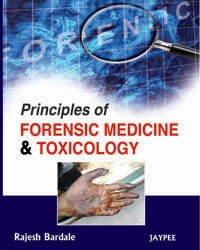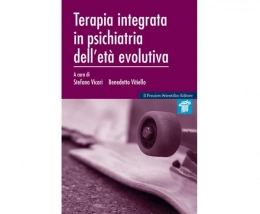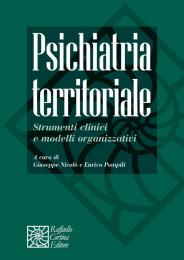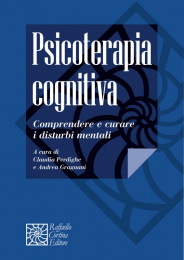Non ci sono recensioni
Author information
MD; Department of Forensic Medicine, Government Medical College and Hospital, Nagpur, India
ection A: Forensic Medicine
1. Legal Procedure............................................................................................... 3
• Courts 4
• Summons or Subpoena 6
• Medical Evidence 7
• Witnesses 9
• Procedure in Court 10
• Conduct of Doctor in the Court 11
2. Medical Jurisprudence................................................................................. 12
• Medical Council of India 12
• Ethical Aspects of Medical Practice 13
• Legal Aspects of Medical Practice 17
• Doctors and Medical Records 19
• Consent 20
• Medical Negligence 23
• Consumer Protection Act 28
• Biomedical Waste Management 29
• Ethics and Medical Research (Human Experimentation) 29
• Indian Medical Council (Professional Conduct, Etiquette and Ethics)
Regulations, 2002 31
3. Identification................................................................................................... 39
• Race 40
• Sex 40
• Age 45
• Age Estimation in Infants, Children and Adults Less than 25 Years 50
• Stature 67
4. Forensic Osteology......................................................................................... 85
• Skull 89
• Mandible 94
• Femur 96
• Tibia 98
• Fibula 98
• Humerus 99
• Radius 101
• Ulna 103
• Sternum 103
• Scapula 104
• Clavicle 106
• Pelvis and Hipbone 106
• Sacrum 110
Contents
xii Principles of Forensic Medicine and Toxicology
5. DNA Profiling..................................................................................................... 113
• Basic Consideration 113
• Typing 114
• Application of DNA Profiling 116
• DNA Evidence 116
• Collection, Preservation and Forwarding of Sample 116
6. Medicolegal Autopsy............................................................................................ 119
• Autopsy Procedure 121
• Laboratory Investigations 123
• Fetal Autopsy 125
• Exhumation 126
• Postmortem Artefacts 127
7. Death and Changes after Death...................................................................... 132
• Types of Death 133
• Brain Death 133
• Death Certificate 135
• Apparent Death 136
• Modes of Death 137
• Manner of Death 137
• Changes after Death 138
• Immediate Changes after Death 138
• Early Changes after Death 139
• Cooling of Body 141
• Postmortem Lividity 143
• Changes in Muscle 147
• Decomposition 151
• Skeletonization 158
• Adipocere 159
• Mummification 161
• Forensic Entomology 162
• Sudden Death 164
8. Injury: General Considerations and Biophysics.............................................. 167
• Physics of Wounding (Biophysics of Injury) 168
9. Mechanical Injury............................................................................................... 171
• Abrasion 171
• Contusion 176
• Lacerated Wounds 182
• Incised Wound 185
• Chop Wound 188
• Stab Wounds (Puncture Wounds) 189
• Fractures 193
10. Firearm Injuries and Bomb Blast Injuries..................................................... 196
• Firearm Injuries 196
• Smooth Bore Firearm (Shotgun) 197
Contents xiii
• Rifled Firearm 201
• Wound Ballistics (Firearm Wounds) 205
• Injuries Caused by Rifled Firearms (Gunshot Wounds) 205
• Smooth Bore Firearm Injury (Shotgun Injuries) 213
• Autopsy Examination 216
• Explosion and Bomb Blast Injuries 217
11. Regional Injuries................................................................................................. 219
• Head Injury 219
• Scalp Injuries 219
• Injury to Skull 221
• Injury to Meninges and Brain 225
• Injury to Brain 231
• Injury to Spine and Spinal Cord 235
• Injury to Chest 236
• Injury to Abdomen 236
12. Road Traffic Accidents........................................................................................ 240
• Injuries to Pedestrian 240
• Injuries Sustained by Motorcyclist 241
• Injuries Sustained to Occupant of Vehicle 242
13. Injury: Medicolegal Considerations.................................................................. 246
• Weapons 252
• Injuries and Law 255
• Homicide 256
14. Thermal Injuries 258
• Exposure to Cold 258
• Exposure to Heat 259
• Burns 260
• Dry Heat Burns 261
• Scalds 273
• Injuries due to Electricity 273
• Lightning 280
15. Violent Asphyxia.................................................................................................. 284
• Anoxia 284
• Types and Causes of Asphyxia 285
• Pathophysiology of Asphyxia 286
• Stages of Asphyxia 286
• Signs of Asphyxia 287
• Hanging 288
• Strangulation 296
• Ligature Strangulation 296
• Throttling (Manual Strangulation) 299
• Hyoid Bone Fracture 300
• Suffocation 301
• Smothering 301
• Gagging 302
xiv Principles of Forensic Medicine and Toxicology
• Choking 303
• Traumatic Asphyxia 304
• Drowning 304
16. Virginity, sexual offenses and Perversions.................................................... 314
• Virginity 314
• Signs of Virginity 314
• Rape 317
• Incest 323
• Adultery 323
• Unnatural Sexual Offenses 323
• Sodomy 323
• Lesbianism 325
• Buccal Coitus 325
• Bestiality 326
• Sexual Paraphilias 326
• Sex-linked Offenses 328
17. Impotence, Sterility and Sterilization............................................................... 329
• Impotence 329
• Frigidity 330
• Sterility 331
• Sterilization 331
18. Pregnancy and Delivery..................................................................................... 334
• Pregnancy 334
• Diagnosis of Pregnancy in Living 334
• Period of Gestation 340
• Delivery 341
• Medicolegal Importance 341
• Evidences of Delivery in Dead 342
19. Abortion and Medical Termination of Pregnancy.......................................... 345
• Abortion 345
• Criminal Abortion 346
• Justifiable Abortion (Therapeutic) 351
20. Infant Deaths and Female Feticide.................................................................. 353
• Infanticide 353
• Sudden Infant Death Syndrome (SIDS) 359
• Battered Baby Syndrome 360
• Cinderella Syndrome 361
• Shaken Baby Syndrome 361
• Munchausen’s Syndrome by Proxy 362
• Female Feticide 362
• PCPNDT Act 2003 362
21. Legitimacy, Paternity and Medicolegal Aspects of Marriage Annulment.. 364
• Legitimacy 364
• Paternity 364
Contents xv
22. Assisted Reproduction.................................................................................... 366
• Artificial Insemination 366
• The Delhi Artificial Insemination (Human) Act 1995 367
• Semen Banking 367
• Posthumous Reproduction 367
• Stem Cell Research 368
• Surrogate Birth and Surrogate Motherhood 368
• Cloning 368
23. S tarvation......................................................................................................... 370
• Malnutrition 370
• Starvation 370
24. Euthanasia........................................................................................................ 373
• Views in Favor of Euthanasia 373
• Views against Euthanasia 374
• Euthanasia: Status in India 374
25. Human Rights, Torture and Medical Ethics 375
• Introduction 375
• Torture 375
26. Medicolegal Aspects of AIDS.......................................................................... 377
27. Anesthetic and Operative Deaths.................................................................. 379
• Classification of Anesthetic Patients 379
• Death due to Surgical Procedure 380
• Autopsy and Investigation 380
28. Medicolegal Aspects of Embalming............................................................... 382
• Composition of Embalming Fluid 382
• Medicolegal Aspects of Embalming 382
29. Forensic Psychiatry......................................................................................... 384
• Disorders 385
• Psychosis and Neurosis 389
• Mental Health Act 1987 390
• Civil Responsibilities 392
• Criminal Responsibilities 393
30. Trace Evidences............................................................................................... 396
• Blood and Bloodstains 396
• Semen 400
• Saliva 402
• Hairs and Fibers 403
31. Forensic Science Laboratory.......................................................................... 407
• Polygraphy 407
• Narcoanalysis 408
• Brain Fingerprinting 409
xvi Principles of Forensic Medicine and Toxicology
Section B: Toxicology
32. Toxicology: General Considerations..................................................................... 413
• Classification 414
• Diagnosis of Poisoning 415
• Management 425
• Antidotes 427
• Diagnosis in Dead (Autopsy Findings) 430
33. Toxicology: Medicolegal Considerations.............................................................. 432
34. Corrosive Poisons.................................................................................................... 437
• Inorganic Acids 437
• Sulfuric Acid (H2SO4) 438
• Nitric Acid 438
• Hydrochloric Acid 439
• Vitriolage 439
• Acetic Acid 439
• Carbolic Acid 439
• Oxalic Acid 441
• Corrosive Alkalis 442
35. Inorganic Irritants: Non-metallic Poisons............................................................. 445
• Iodine 445
• Phosphorus 446
36. Inorganic Irritants: Metallic Poisons.................................................................... 449
• Copper 449
• Thallium 451
• Arsenic 451
• Mercury 455
• Lead (Sisha) 459
• Iron 462
• Zinc (JASAT) 463
• Antimony 464
• Metal Fume fever 464
37. Organic Irritants: Plants and Vegetables............................................................. 467
• Poisonous Parts of Plant 467
• Toxic Principle in Plant 467
• Abrus 467
• Castor 469
• Croton 470
• Capsicum 471
• Calotropis 472
• Marking Nut 473
• Plumbago 474
• Colocynth 475
• Ergot 476
Contents xvii
38. Organic Irritants: Animal Bites and Stings................................................ 477
• Snake 477
• Features of Common Poisonous Snakes 478
• Venom Composition 480
• Clinical Features 481
• Scorpion 484
• Bees 486
• Wasp 486
39. Mechanical Irritants......................................................................................... 488
40. Pesticides............................................................................................................ 490
• Organophosphorus Compounds 490
• Organochlorines 493
• Carbamate 495
• Pyrethrum, Pyrethrins and Pyrethroids 496
• Paraquat 497
• Aluminium Phosphide 497
41. Cardiac Poisons................................................................................................ 500
• Tobacco 500
• Common Oleander 501
• Yellow Oleander 502
• Aconite 503
• Hydrocyanic Acid 505
42. Somniferous Poisons........................................................................................ 508
• Opium 508
43. Inebriant Poisons.............................................................................................. 511
• Alcohol 511
• Alcohol Intoxication 514
• Drunkenness 516
• Alcoholism 520
• Methyl Alcohol 525
44. Deliriant Poisons............................................................................................... 528
• Datura 528
• Cannabis 530
• Cocaine 532
45. Spinal Poisons................................................................................................... 535
• Strychnine 535
46. Peripheral Nerve Poisons................................................................................ 538
• Curare 538
• Conium Maculatum 539
xviii Principles of Forensic Medicine and Toxicology
47. Asphyxiants.................................................................................................... 541
• Carbon Monoxide 541
• Carbon Dioxide 543
• Hydrogen Sulfide 543
• Methyl Isocyanate (MIC) 544
48. Food Poisoning.............................................................................................. 546
• Food Poisoning by Bacteria 547
49. Drug Dependence and Abuse...................................................................... 549
50. War Gases...................................................................................................... 552
• Lachrimators (Tear Gases) 552
Index................................................................................................................ 555




